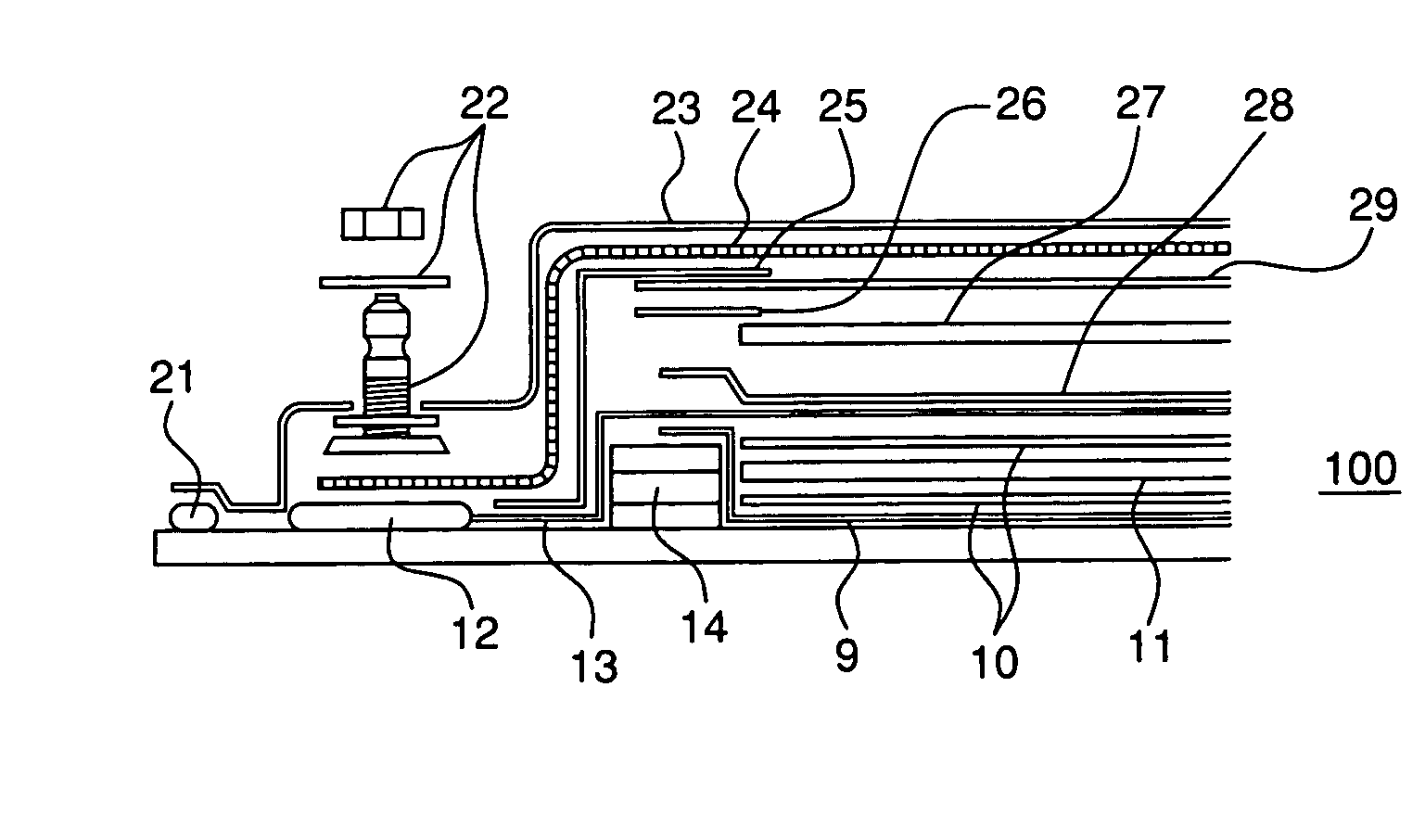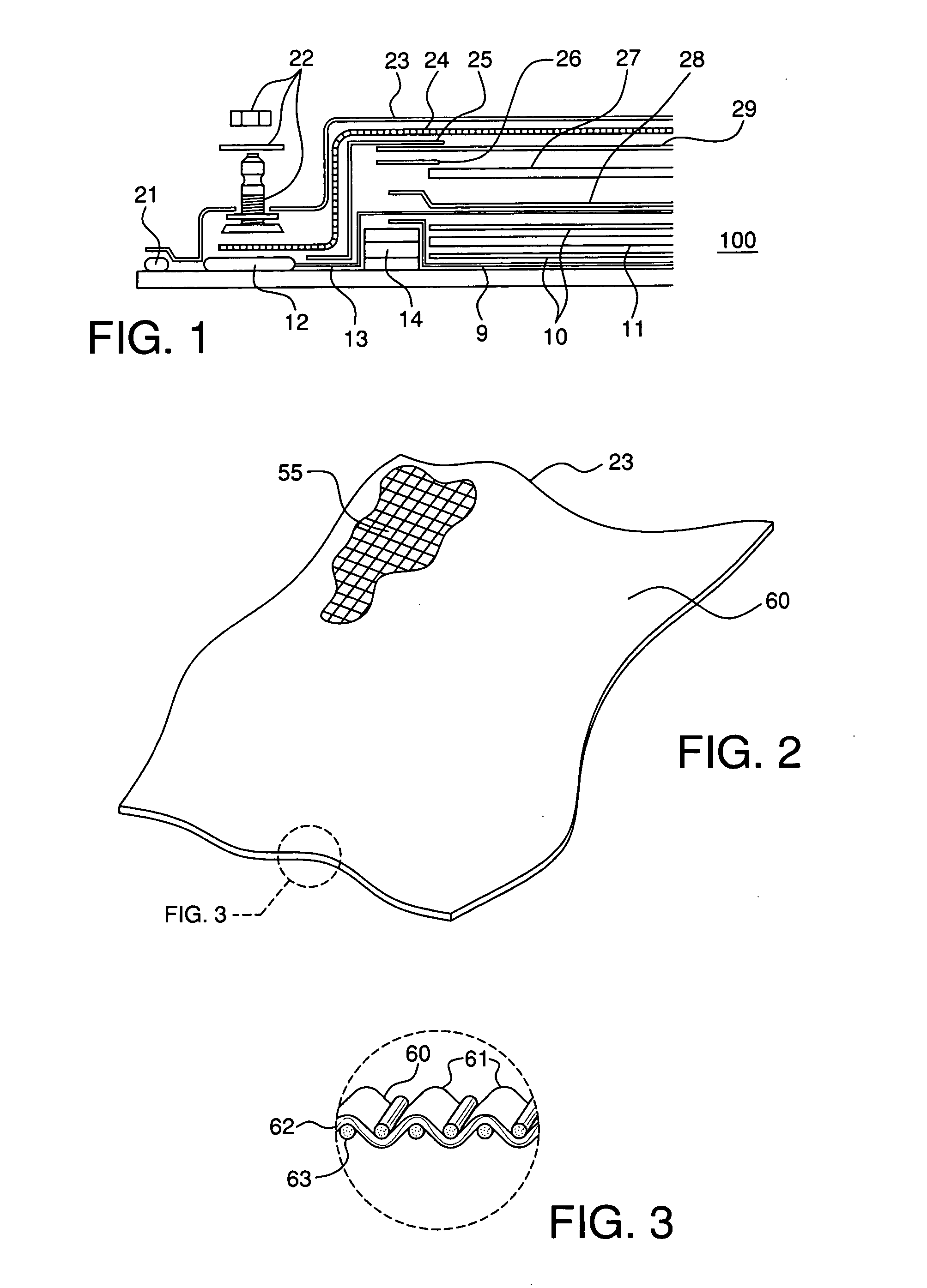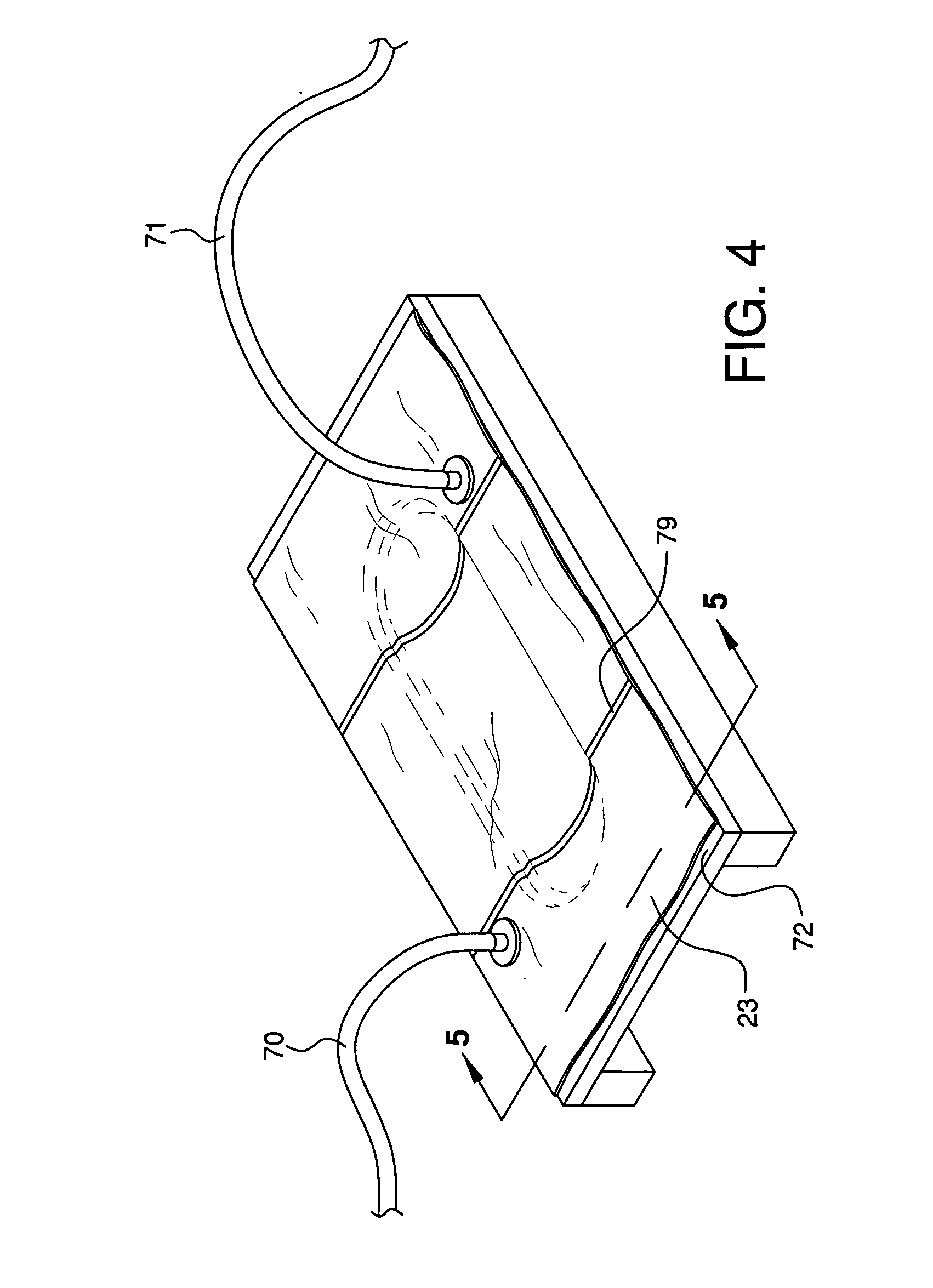Reusable vacuum bag and methods of its use
a vacuum bag and reusable technology, applied in the field of reusable vacuum bags, can solve the problems of large cost, limited and infrequent use by most commercial establishments, and easy attack of silicone bags, and achieve the effects of reducing disposables and costs, reducing the risk of contamination, and maintaining some flexibility
- Summary
- Abstract
- Description
- Claims
- Application Information
AI Technical Summary
Benefits of technology
Problems solved by technology
Method used
Image
Examples
example a
[0068] With respect to FIGS. 4 and 5, an example of preferred resin transfer molding operation using the reusable vacuum bag 23 of this invention is described. The bag 23 can be made of a 3.5 oz / yd2 plain weave, woven Kevlar® fabric with a multi-layered PTFE / FEP coated resin film thermally bonded to, and / or melted into, one or both surfaces of the woven fabric. This base fabric is a Saint-Gobain Performance Plastics, Merrimack, N.H., fabric style “X-22 Natural”, that we had developed for the prototype vacuum bags. This is just one of the many fabrics useful for this application. The resin and catalyst may be mixed just prior to introduction into the envelope formed between the vacuum bag 23 and the mold 72. The catalyst can include a conventional heat reactive or ambient temperature reactive catalyst or any conventional photoinitiator and / or photosensitizer, depending upon the dynamics of the thermosetting system. Alternatively, a melted thermoplastic material could be employed. The...
PUM
| Property | Measurement | Unit |
|---|---|---|
| thickness | aaaaa | aaaaa |
| pressure drop | aaaaa | aaaaa |
| temperatures | aaaaa | aaaaa |
Abstract
Description
Claims
Application Information
 Login to View More
Login to View More - R&D
- Intellectual Property
- Life Sciences
- Materials
- Tech Scout
- Unparalleled Data Quality
- Higher Quality Content
- 60% Fewer Hallucinations
Browse by: Latest US Patents, China's latest patents, Technical Efficacy Thesaurus, Application Domain, Technology Topic, Popular Technical Reports.
© 2025 PatSnap. All rights reserved.Legal|Privacy policy|Modern Slavery Act Transparency Statement|Sitemap|About US| Contact US: help@patsnap.com



